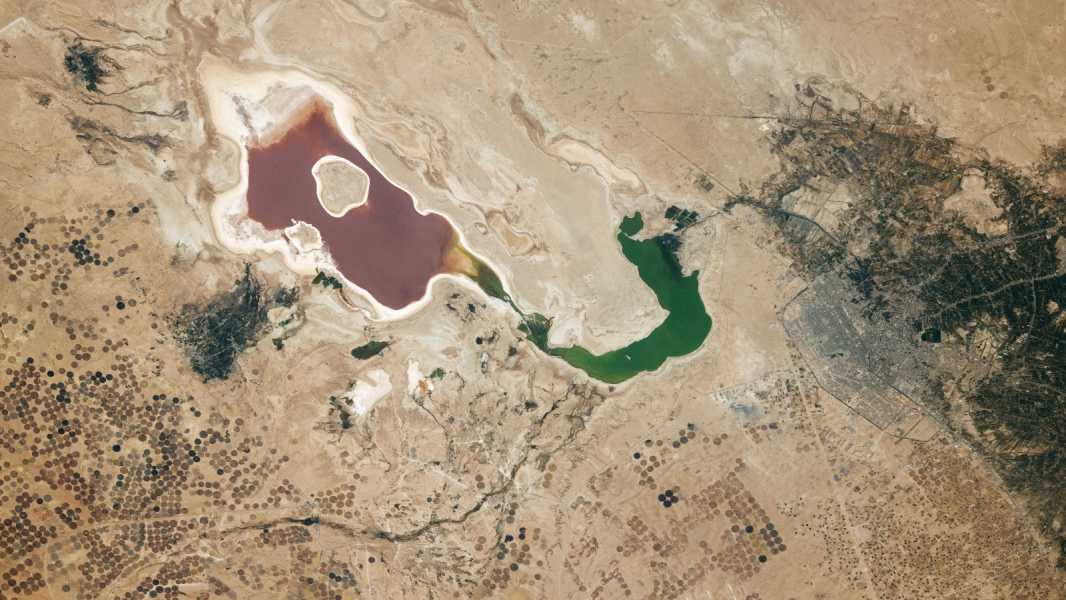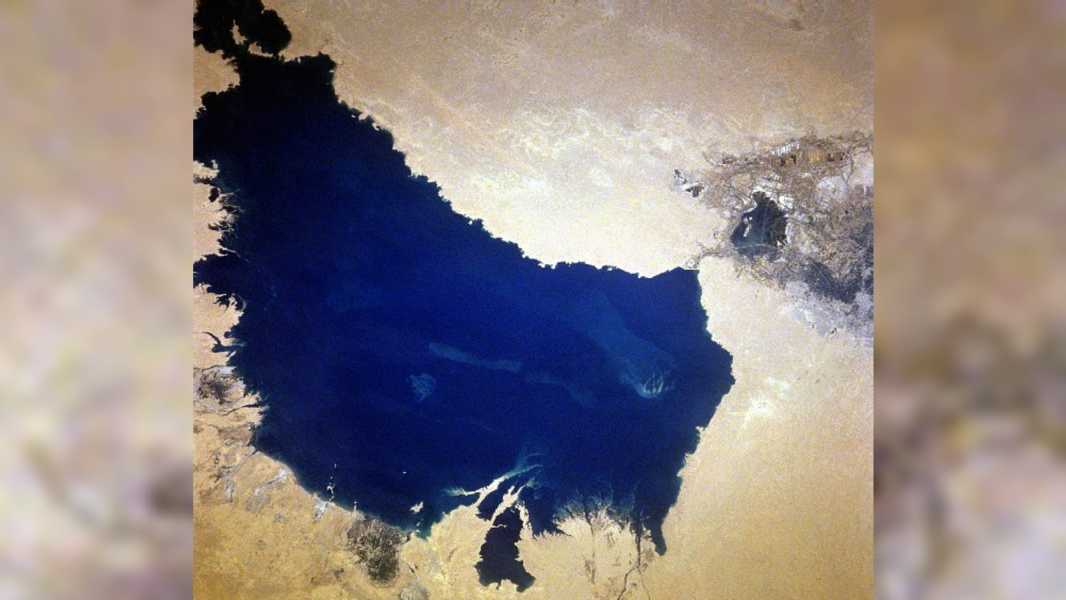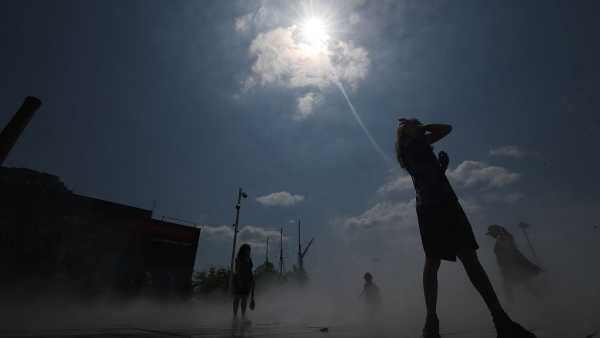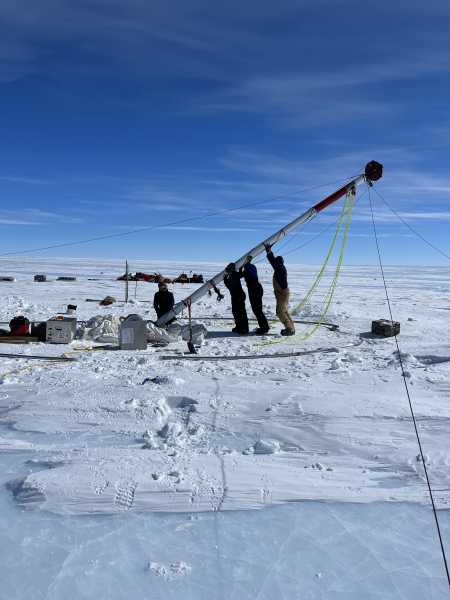
The vibrant hues of Lake Razaza are due to the different species of algae that inhabit every part of this drought-stricken artificial lake. (Image credit: NASA/ISS Program)
This astronaut's haunting photograph illustrates the surprising duality of a man-made lake in Iraq that has gradually transformed into a salty, multi-colored body of water after years of drought. It's also home to hundreds of mysterious man-made “crop circles.”
Lake Razaza, also known as Bahr al-Milh or Milh Lake, is a man-made reservoir located west of the city of Karbala (pictured). The reservoir was created in the 1970s by diverting excess water from nearby Lake Habbaniyah through a canal into a natural depression. Over the decades, the lake became increasingly salty as minerals from the bottom of the reservoir dissolved into the water. (Bahr al-Milh means “sea of salt” in Arabic.)
In the photo, the lake is divided into two colors: pink-red and marsh-green. The variety of colors is due to the high concentration of algae in the water, according to NASA Earth Observatory. Each half of the lake is almost completely isolated from the other and has different chemical compositions and salinity levels, indicating the presence of different types of algae, which is what causes the contrasting shades.
However, the lake has not always looked like this. The colors only began to appear in the last ten years, during droughts, when the water level dropped to 16 to 32 feet (5 to 10 meters). Previously, the lake was much deeper and had a more familiar blue color.
The lake once covered a much larger area and at certain times was one of the largest freshwater lakes in Iraq, Reuters reported.

Lake Razaza looked very different in the past. This satellite image from 1996 shows the lake at its maximum volume, before the crop circles appeared around it.
Southwest of the lake, hundreds of strange dark circles litter the landscape. These are circular fields that are irrigated by center-pivot irrigation systems, where one large machine sprays water as it rotates around the field like the hands of a clock, according to Earth Observatory.
The creation of these fields also likely contributed to the decline of the bright lake, as water from the lake and the nearby Euphrates River, which flows into Lake Habbaniyah, was used to irrigate the circular plots. The crop circles were originally intended to cover the shoreline of Razaza, but now that the lake has shrunk, a significant gap has formed.
In the first years after the formation of Razaza, fish were introduced into the lake, and along the shoreline arose
Sourse: www.livescience.com





